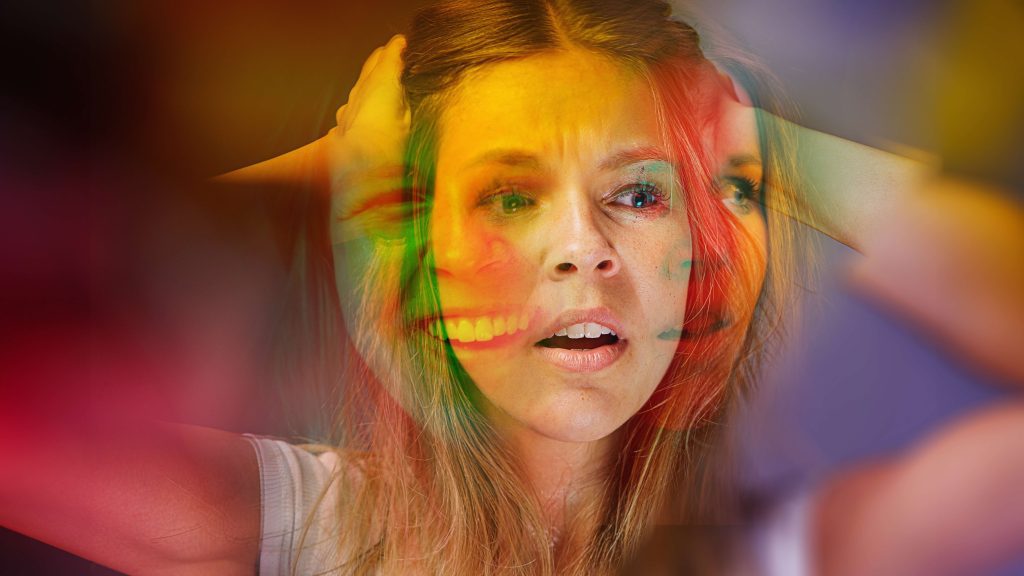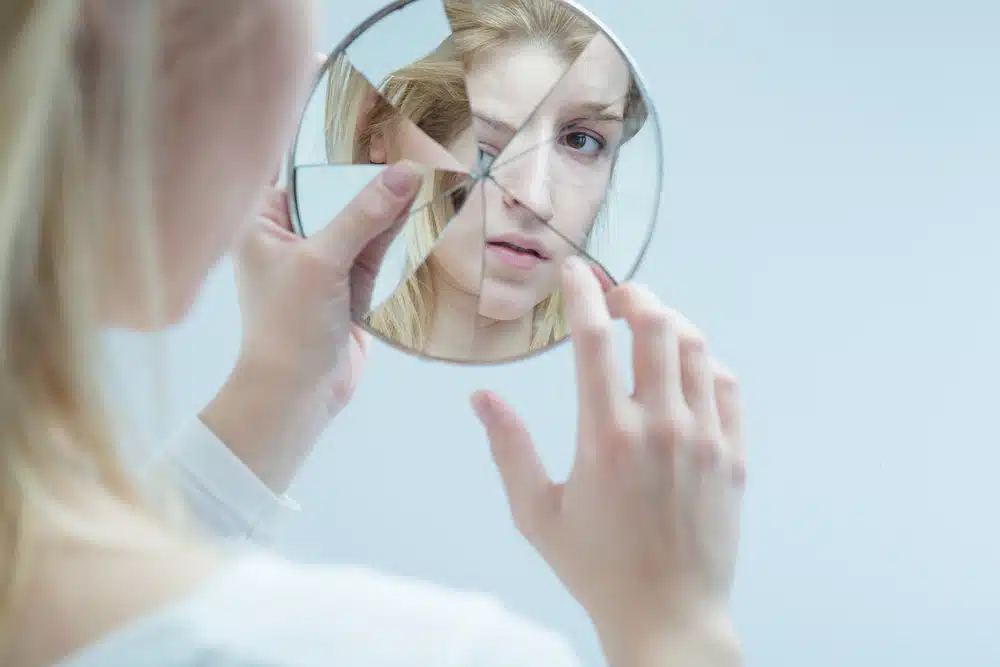Understanding Bipolar Symptoms in Women
Bipolar disorder is a complex mental health condition characterized by extreme mood swings, including emotional highs (mania or hypomania) and lows (depression). While bipolar disorder affects both men and women, the symptoms can present differently in each gender. Understanding the specific symptoms of bipolar disorder in women is essential for accurate diagnosis and effective treatment.

What is Bipolar Disorder?
Definition
Bipolar disorder, also known as manic-depressive illness, involves periods of intense emotional states. These periods are categorized as manic, hypomanic, or depressive episodes. The disorder can significantly disrupt daily life, affecting work, relationships, and overall functioning.
Types of Bipolar Disorder
- Bipolar I Disorder: Characterized by manic episodes that last at least seven days, or by manic symptoms severe enough to require immediate hospital care. Depressive episodes also occur, typically lasting at least two weeks.
- Bipolar II Disorder: Defined by a pattern of depressive episodes and hypomanic episodes, which are less severe than manic episodes.
- Cyclothymic Disorder (Cyclothymia): Marked by periods of hypomanic symptoms and periods of depressive symptoms lasting for at least two years. However, the symptoms do not meet the diagnostic criteria for a hypomanic episode and a depressive episode.

Symptoms of Bipolar Disorder in Women
Manic and Hypomanic Episodes
During manic or hypomanic episodes, women may exhibit the following symptoms:
- Increased Energy and Activity Levels: Women often display unusually high levels of energy, leading to increased activity and restlessness.
- Euphoria or Irritability: Extreme happiness or irritability is common. Women might feel overly confident or engage in risky behaviors.
- Decreased Need for Sleep: Despite reduced sleep, women may not feel tired and can go for days with little to no sleep.
- Rapid Speech and Racing Thoughts: Speaking quickly, jumping from one idea to another, and having racing thoughts are typical symptoms.
- Impulsivity and Poor Judgment: Women might make hasty decisions without considering the consequences, such as spending sprees or engaging in unsafe activities.
Depressive Episodes
During depressive episodes, the following symptoms are commonly observed in women:
- Persistent Sadness: A deep sense of sadness or hopelessness that doesn’t go away.
- Loss of Interest: Lack of interest or pleasure in activities once enjoyed, including hobbies and social interactions.
- Fatigue and Low Energy: Constant tiredness and a significant decrease in energy levels.
- Changes in Sleep Patterns: Insomnia or oversleeping can occur, disrupting normal sleep cycles.
- Appetite Changes: Significant weight loss or gain due to changes in appetite.
- Feelings of Worthlessness or Guilt: Excessive or inappropriate guilt, feelings of worthlessness, or self-blame.
- Difficulty Concentrating: Trouble focusing, making decisions, or remembering things.
- Suicidal Thoughts: Recurrent thoughts of death or suicide, or actual suicide attempts.
Differences in Symptoms Between Women and Men
While many symptoms of bipolar disorder are common to both women and men, some differences are noteworthy:
Manic Episodes
- Severity and Type of Mania: Women are more likely to experience hypomanic episodes, which are less severe than the full-blown manic episodes more commonly seen in men. During hypomania, women may feel euphoric and energetic but are less likely to engage in extremely risky behaviors.
- Mixed Features: Women are more likely to experience mixed features, where symptoms of mania and depression occur simultaneously. These episodes can be particularly challenging to manage and may lead to higher levels of distress.
Depressive Episodes
- Duration and Frequency: Women tend to experience longer and more frequent depressive episodes compared to men. This can lead to a greater overall impact on daily functioning and quality of life.
- Expression of Emotions: While men may express irritability and anger during depressive episodes, women are more likely to exhibit feelings of sadness, tearfulness, and hopelessness.
Hormonal Influences
- Menstrual Cycle: Hormonal fluctuations during the menstrual cycle can influence mood symptoms in women. Many women report worsening symptoms of bipolar disorder during the premenstrual phase.
- Pregnancy and Postpartum Period: Pregnancy, childbirth, and the postpartum period can significantly impact the course of bipolar disorder in women. These periods are associated with a higher risk of mood episodes, particularly postpartum depression and postpartum psychosis.
Causes and Risk Factors
Genetic Factors
Bipolar disorder has a strong genetic component. Women with a family history of bipolar disorder are at a higher risk of developing the condition. Research has identified several genetic markers associated with an increased risk of bipolar disorder.
Biological Differences
Biological differences in the brain, such as structural and functional abnormalities, may contribute to bipolar disorder. Hormonal fluctuations and neurochemical imbalances also play a role.
Environmental Factors
Environmental factors, including stress, trauma, and significant life changes, can trigger bipolar episodes in genetically predisposed individuals. Women may experience different stressors than men, influencing the onset and course of the disorder.
Diagnosis
Clinical Evaluation
Diagnosing bipolar disorder in women involves a thorough clinical evaluation by a mental health professional. This evaluation typically includes:
- Medical History: A detailed medical and psychiatric history to rule out other conditions.
- Symptom Assessment: An assessment of the individual’s symptoms, including their duration and severity.
- Family History: Gathering information about any family history of bipolar disorder or other mental health conditions.
- Mood Charts: Keeping a daily record of mood symptoms, sleep patterns, and other factors to help identify patterns.
Treatment of Bipolar Disorder in Women
Medication
Medication is often a cornerstone of treatment for bipolar disorder. Commonly prescribed medications include:
- Mood Stabilizers: Such as lithium, which can help control mood swings and prevent manic and depressive episodes.
- Antipsychotics: Such as quetiapine (Seroquel) and lurasidone (Latuda), which are effective in treating both manic and depressive episodes.
- Antidepressants: These are sometimes used in combination with mood stabilizers to prevent triggering manic episodes.
Psychotherapy
Psychotherapy, also known as talk therapy, is an essential component of treatment. Effective therapeutic approaches include:
- Cognitive Behavioral Therapy (CBT): Helps individuals identify and change negative thought patterns and behaviors.
- Interpersonal and Social Rhythm Therapy (IPSRT): Focuses on improving interpersonal relationships and establishing regular daily routines to stabilize mood swings.
- Psychoeducation: Educates individuals and their families about bipolar disorder and its management.
Lifestyle and Home Remedies
Adopting a healthy lifestyle can also play a significant role in managing bipolar disorder. Recommendations include:
- Regular Exercise: Physical activity can improve mood and overall health.
- Healthy Diet: Eating a balanced diet can help stabilize mood swings.
- Adequate Sleep: Maintaining a regular sleep schedule is crucial for mood regulation.
- Stress Management: Techniques such as mindfulness, meditation, and yoga can help manage stress.
Coping with Bipolar Disorder
Building a Support Network
Having a strong support network is vital for women with bipolar disorder. This can include family, friends, support groups, and mental health professionals. Sharing experiences and receiving support from others can make a significant difference.
Developing Coping Strategies
Learning and practicing effective coping strategies can help manage the symptoms of bipolar disorder. Strategies might include:
- Monitoring Mood: Keeping track of mood changes and identifying triggers.
- Creating a Routine: Establishing a daily routine to provide structure and stability.
- Setting Realistic Goals: Setting achievable goals to avoid becoming overwhelmed.
Research and Future Directions
Ongoing Research
Ongoing research aims to improve the understanding and treatment of bipolar disorder in women. Studies are investigating the underlying causes of bipolar disorder, including genetic, biological, and environmental factors. Advances in neuroimaging and genomics are providing new insights into the condition.
Innovative Treatments
Innovative treatments are being developed and tested to provide more effective options for individuals with bipolar disorder. These include novel medications, brain stimulation therapies, and personalized treatment approaches based on genetic and biological markers.


Understanding the specific symptoms of bipolar disorder in women is crucial for accurate diagnosis and effective treatment. By recognizing the unique ways in which bipolar disorder manifests in women, healthcare providers can tailor their approach to better meet the needs of their female patients. Through a combination of medication, psychotherapy, lifestyle changes, and support, women with bipolar disorder can manage their symptoms and lead fulfilling lives. Ongoing research continues to offer hope for new and improved treatments, further enhancing the quality of life for those living with this condition.
Published: July 15, 2024
Last Updated: June 02, 2025

Published: September 26, 2025
Understanding Personality Disorder Clusters: Personality Disorder Cluster A, B, and C
Personality disorders are long-standing patterns of behavior, thoughts, and emotions that can create difficulties in relationships, work, and daily functioning. Instead of being flexible and adapting to life’s situations, these patterns remain rigid and cause distress. The DSM-5 (Diagnostic and Statistical Manual of Mental Disorders, Fifth Edition) organizes personality disorders into three groups, called clusters. […]
Read more
Published: September 05, 2025
Understanding Borderline Personality Disorder (BPD): Causes, Symptoms and Treatment
Borderline Personality Disorder (BPD) is a complex and often misunderstood mental health condition marked by intense emotional instability, turbulent relationships, and an overwhelming fear of abandonment. As a Cluster B personality disorder, BPD can make everyday life feel chaotic and overwhelming—but with tailored therapy, individuals can learn to regulate emotions, build meaningful connections, and thrive. […]
Read more
Published: August 24, 2025
Understanding Histrionic Personality Disorder (HPD): Causes, Symptoms and Treatment of HPD
Histrionic Personality Disorder (HPD) is more than being dramatic—it’s a serious mental health condition that can disrupt relationships, careers, and self-esteem. Belonging to Cluster B personality disorders, HPD is marked by attention-seeking behavior, shallow but intense emotions, and a constant need for approval. Left untreated, it often creates cycles of frustration and conflict, but with […]
Read more
